Idea by
Marcos G. Rojo
Marcos G. Rojo
Call for ideas 2017
EcoTinker
EcoTinker
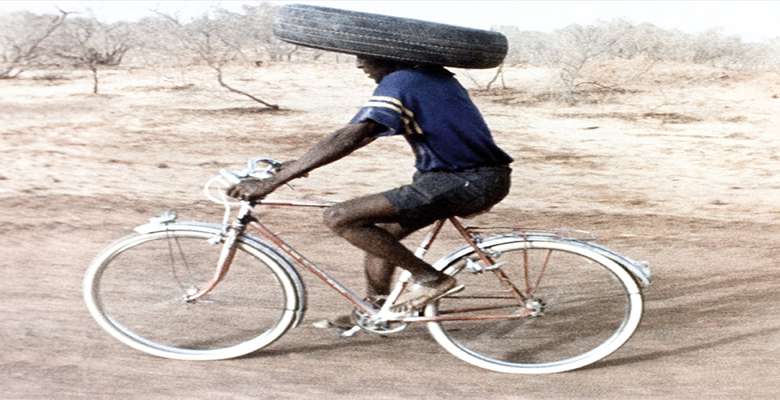
EcoTinker operates at the existing disconnection between architectural design and sustainable development—whose result is a status-quo transforming sustainability into a “sustained” technocratic development. Sustainable architecture can be reduced to a caricature with two faces: one, a technophillic monument to ecology and the second, the pastoral praise of passiveness. Both approaches raise problems when dealing with contemporary concerns such as rapid urbanization, environmental inequalities or globalized urban sprawl. The project looks for a new way to define sustainability in architectural terms, one that activates ecology as a valid and relevant component of the design process. To this end, a series of interactive tools (database, mixer and resource manual) are proposed. Additionally, the final interface serves as a community-based platform for collective knowledge, bringing together different agents in an interdisciplinary discourse.
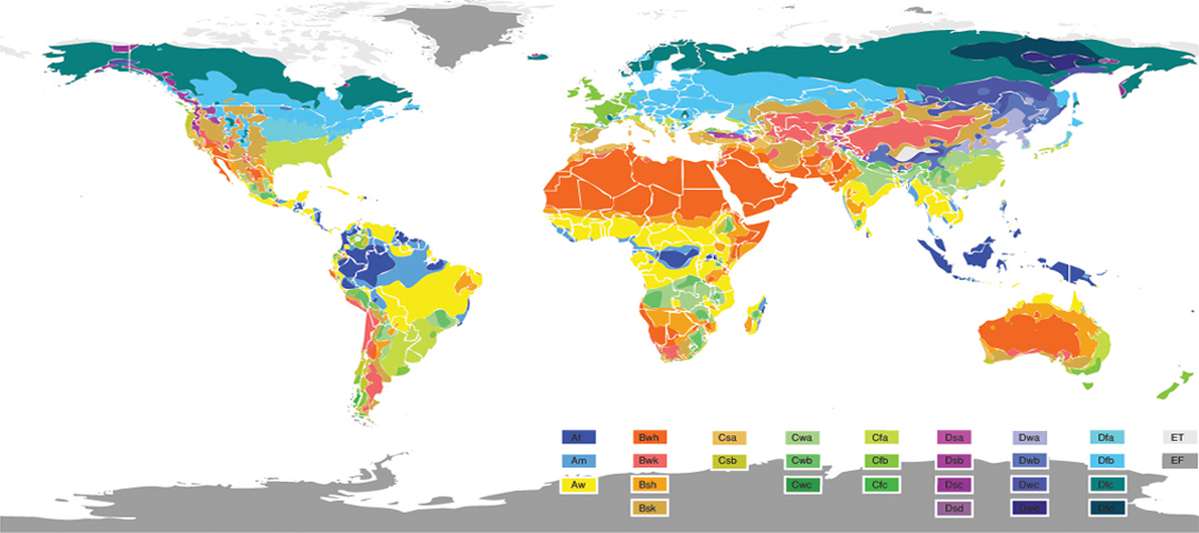
The World according to the Koppen-Geiger classification
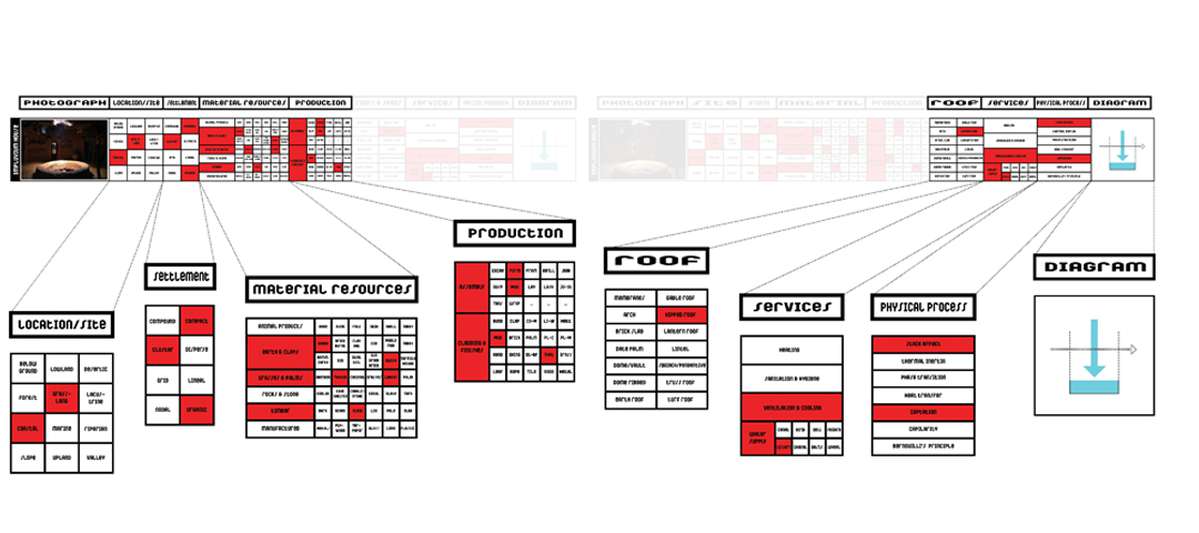
Low-Energy Demanding Tectonics. Classification
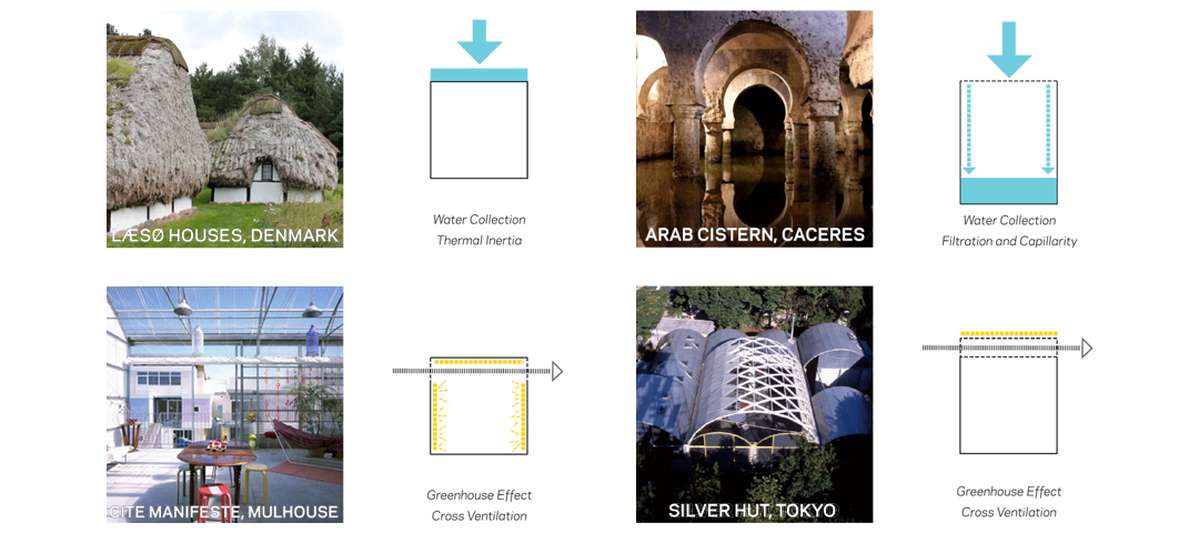
Low-Energy Demanding Tectonics. Physical Phenomena Diagrams
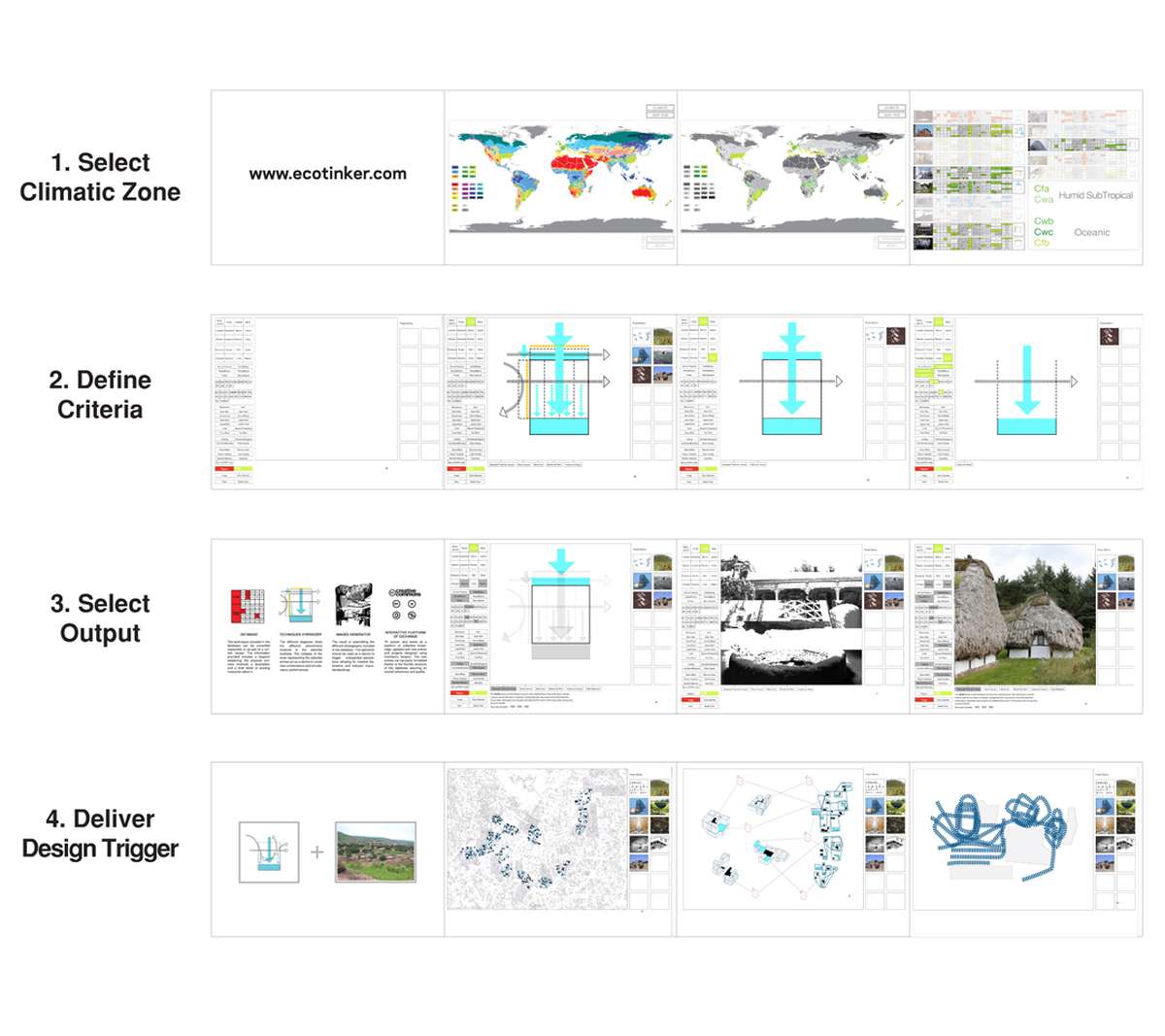
Prototype Interface and Interactive Platform
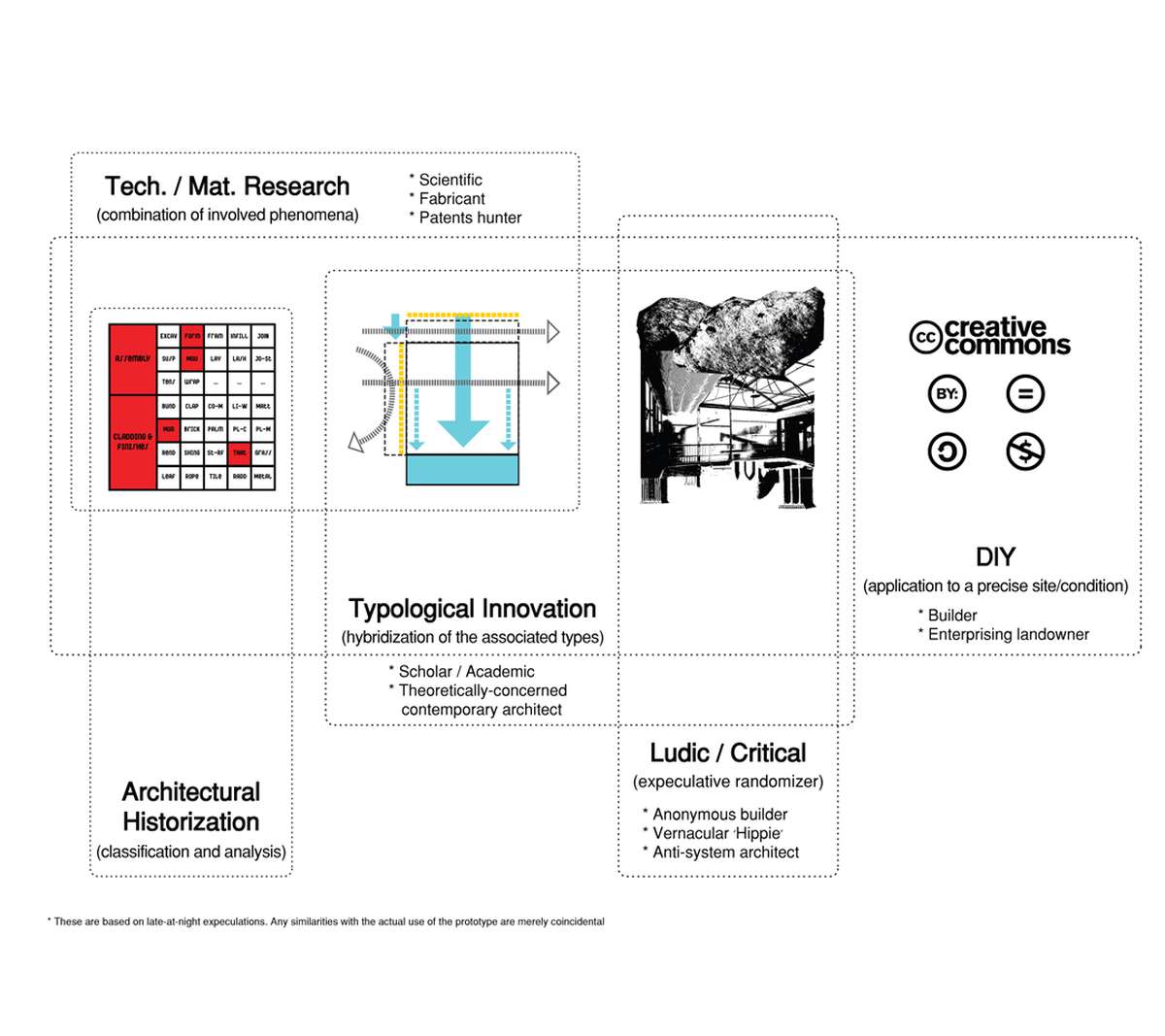
EcoTinker Objectives, Aims and Relevance
EcoTinker
EcoTinker

EcoTinker operates at the existing disconnection between architectural design and sustainable development—whose result is a status-quo transforming sustainability into a “sustained” technocratic development. Sustainable architecture can be reduced to a caricature with two faces: one, a technophillic monument to ecology and the second, the pastoral praise of passiveness. Both approaches raise problems when dealing with contemporary concerns such as rapid urbanization, environmental inequalities or globalized urban sprawl. The project looks for a new way to define sustainability in architectural terms, one that activates ecology as a valid and relevant component of the design process. To this end, a series of interactive tools (database, mixer and resource manual) are proposed. Additionally, the final interface serves as a community-based platform for collective knowledge, bringing together different agents in an interdisciplinary discourse.
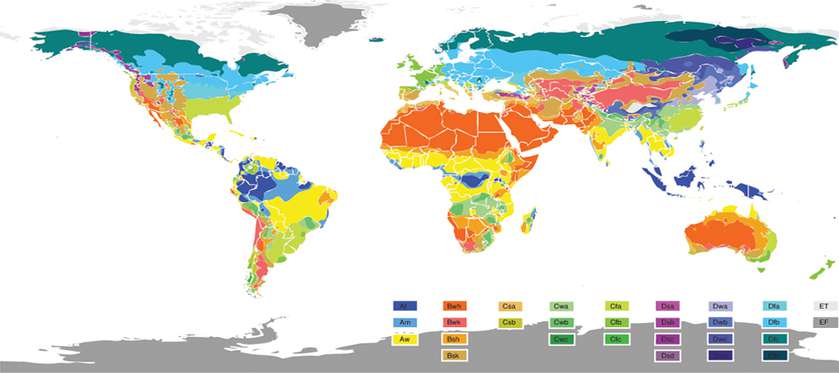
The World according to the Koppen-Geiger classification

Low-Energy Demanding Tectonics. Classification
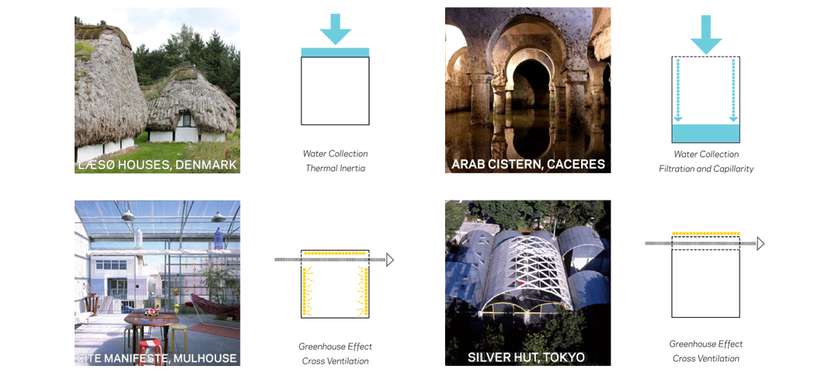
Low-Energy Demanding Tectonics. Physical Phenomena Diagrams
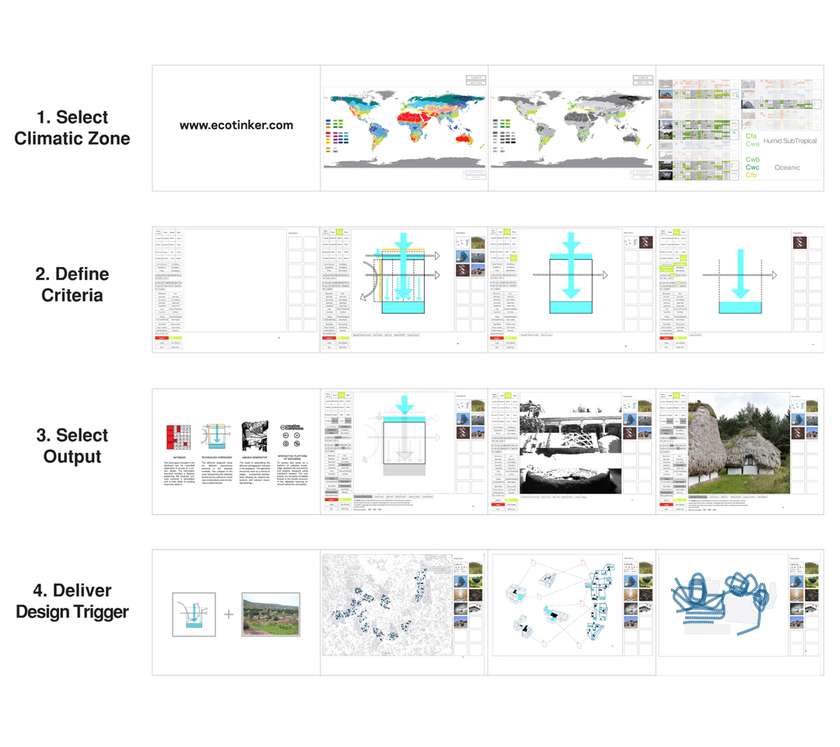
Prototype Interface and Interactive Platform
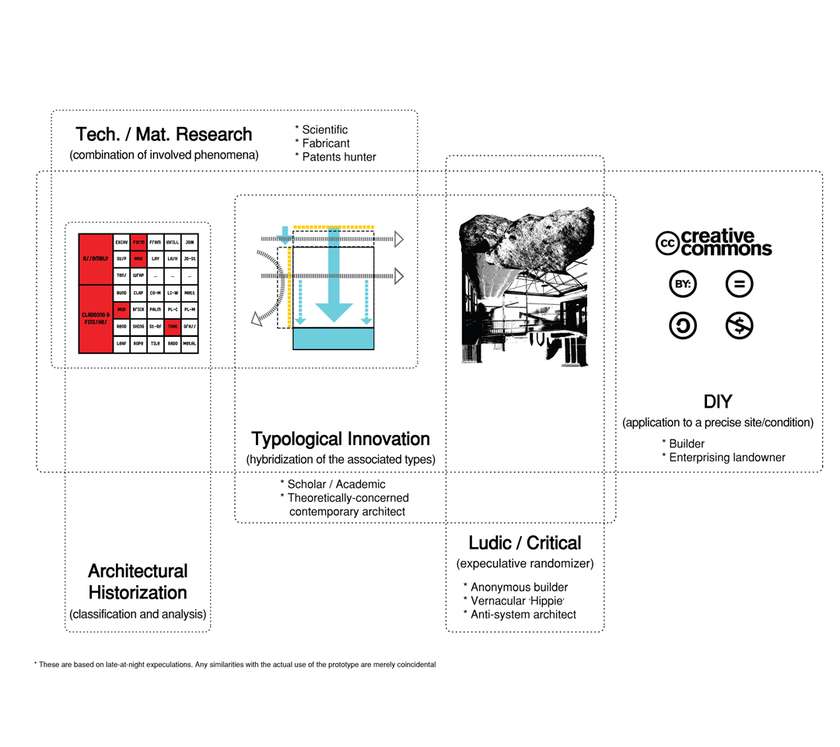
EcoTinker Objectives, Aims and Relevance